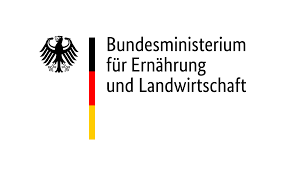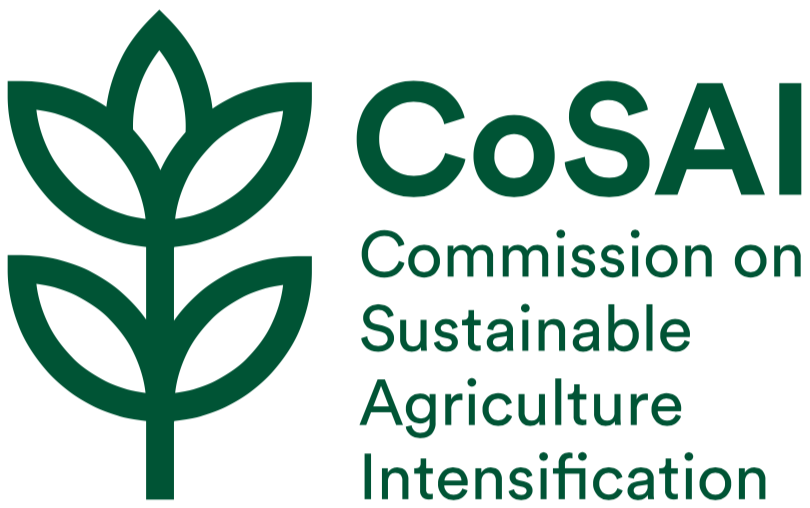Résultats de la recherche
Displaying 1 - 10 of 20 results.
Experiencias de una estrategia con investigación participativa
Este Libro describe experiencias de extensión y investigación participativa en México. Describe la origen, fundamentos teóricos, objetivos, caracteristicas y acciones básicas, alcances y limitaciones así como la importancia de la investigación participativa en los procesos y modelos de desarrollo. Trae una propuesta metodológica y experiencias obtenidas en cuatro estados mexicanos.
Sujet(s):
Service de vulgarisationrenforcement des capacités (RC)Écoles pratiques d'agriculture (FFS)vulgarisationplates-formes d'innovationapproches participatives...
Année de publication:
2010Asociatividad para la competitividad en la agroindustria de Oaxaca, México.
Se plantea en este trabajo producto de la investigación Asociatividad y Competitividad en la Agroindustria Alimentaria en Oaxaca, México, cuyo objeto es diseñar un modelo para la Agroindustria Alimentaria; para lo cual es necesario un análisis descriptivo documental que permite caracterizar los elementos que condicionan la Asociatividad en las micro, pequeñas y medianas empresas del sector agroindustrial alimentario, y su utilización como estrategia para ser competitivas las MiPyMEs así como para hacer la contribución decisiva a la seguridad alimentaria. Se presenta en el documento la situa
Sujet(s):
Année de publication:
2016Promoting sustainability in food consumption – Developing an integrated food policy and creating fair food environments. Executive summary and synthesis report
How we eat has a major impact on our individual health status, our quality of life and our well-being. Many of the foods we eat have a major social, environmental, climate and animal welfare footprint. This expertise defines policies to promote sustainability in food consumption as policies that integrate all four target dimensions: human health, social aspects, the natural environment (including climate) and animal welfare. Achieving greater sustainability in food consumption poses great challenges.
Sujet(s):
Année de publication:
2020Reorienting funding for research and innovation is an urgent step to transform agri-food systems
Sujet(s):
Année de publication:
2021Mining the gaps: Using machine learning to map 1.2 million agri-food publications from the Global South
The evidence base on agri-food systems is growing exponentially. The CoSAI-commissioned study, Mining the Gaps, applied artificial intelligence to mine more than 1.2 million publications for data, creating a clearer picture of what research has been conducted on small-scale farming and post-production systems from 2000 to the present, and where evidence gaps exist.
Sujet(s):
Année de publication:
2021Better instruments and approaches are needed to transform agri-food systems research and innovation
A range of approaches and financial instruments have been used to stimulate and support innovation in agriculture and resolve interlocking constraints for uptake at scale. These include innovation platforms, results-based payments, value chain approaches, grants and prizes, incubators, participatory work with farmer networks, and many more.
Sujet(s):
Année de publication:
2021Learning from agri-food innovation pathways in Brazil, India and Kenya
Innovation for sustainable agricultural intensification (SAI) is challenging. Changing agricultural systems at scale normally means working with partners at different levels to make changes in policies and social institutions, along with technical practices. This study extracts lessons for practitioners and investors in innovation in SAI, based on concrete examples, to guide future investment.
Sujet(s):
Année de publication:
2022Eight research and innovation principles for sustainable and equitable agri-food systems
A huge increase in investment in innovation for agricultural systems is critical to meet the Sustainable Development Goals and Paris Climate Agreement. Most of this increase needs to come from reorienting existing funding for innovation. However, understanding whether an investment will fully promote environmentally sustainable and equitable agri-food systems can be difficult.
Sujet(s):
Année de publication:
2022Innovation in farm reward mechanisms is pivotal for transforming agriculture to protect and restore nature in the Global South
Finance is a key lever for turning agriculture from a potential source of environmental harm and social inequity to a driver of conservation and social inclusiveness. Private and public sector funding for farmers to combat climate change and protect and restore nature (‘Paying for Nature’) is rapidly increasing. Yet this new funding may not reach its aims without drastically improving farm-level reward mechanisms.
Sujet(s):
Année de publication:
2022Pages
Sorting block
Filtrer par idiome
Filtrer par sujet(s)
- advisory services (1) Apply advisory services filter advisory services
- capacity development (CD) (1) Apply capacity development (CD) filter capacity development (CD)
- climate change (1) Apply climate change filter climate change
- education (1) Apply education filter education
- extension (2) Apply extension filter extension
- food and nutrition security (2) Apply food and nutrition security filter food and nutrition security
- innovation systems (13) Apply innovation systems filter innovation systems
- knowledge and information systems (2) Apply knowledge and information systems filter knowledge and information systems
- learning (3) Apply learning filter learning
- monitoring and evaluation (M&E) (1) Apply monitoring and evaluation (M&E) filter monitoring and evaluation (M&E)
- needs assessment (1) Apply needs assessment filter needs assessment
- networks (2) Apply networks filter networks
- participatory approaches (1) Apply participatory approaches filter participatory approaches
- policies (3) Apply policies filter policies
- research (5) Apply research filter research
- sustainable agriculture (7) Apply sustainable agriculture filter sustainable agriculture
- value chains (1) Apply value chains filter value chains
Filtrer par auteur(s)
- (-) Remove Commission on Sustainable Agriculture Intensification (CoSAI) filter Commission on Sustainable Agriculture Intensification (CoSAI)Commission on Sustainable Agriculture Intensification (CoSAI)
- Adekunle A. A. (9) Apply Adekunle A. A. filter Adekunle A. A.
- Agrinatura (43) Apply Agrinatura filter Agrinatura
- Aguilar-Ávila J. (10) Apply Aguilar-Ávila J. filter Aguilar-Ávila J.
- Asia-Pacific Islands Rural Advisory Services Network (APIRAS) (12) Apply Asia-Pacific Islands Rural Advisory Services Network (APIRAS) filter Asia-Pacific Islands Rural Advisory Services Network (APIRAS)
- CDAIS project (98) Apply CDAIS project filter CDAIS project
- Chia E. (10) Apply Chia E. filter Chia E.
- Devaux A. (10) Apply Devaux A. filter Devaux A.
- Dhehibi B. (11) Apply Dhehibi B. filter Dhehibi B.
- Dror I. (24) Apply Dror I. filter Dror I.
- Fatunbi O. (15) Apply Fatunbi O. filter Fatunbi O.
- Faure G. (10) Apply Faure G. filter Faure G.
- Food and Agriculture Organization of the United Nations (12) Apply Food and Agriculture Organization of the United Nations filter Food and Agriculture Organization of the United Nations
- Food and Agriculture Organization of the United Nations (17) Apply Food and Agriculture Organization of the United Nations filter Food and Agriculture Organization of the United Nations
- Food and Agriculture Organization of the United Nations (FAO) (142) Apply Food and Agriculture Organization of the United Nations (FAO) filter Food and Agriculture Organization of the United Nations (FAO)
- Food and Agriculture Organization of the United Nations ( FAO ) (81) Apply Food and Agriculture Organization of the United Nations ( FAO ) filter Food and Agriculture Organization of the United Nations ( FAO )
- Hall, A. (24) Apply Hall, A. filter Hall, A.
- Hall A. (12) Apply Hall A. filter Hall A.
- Hoekstra D. (11) Apply Hoekstra D. filter Hoekstra D.
- IICA (48) Apply IICA filter IICA
- International Fund for Agricultural Development (18) Apply International Fund for Agricultural Development filter International Fund for Agricultural Development
- International Fund for Agricultural Development (IFAD) (13) Apply International Fund for Agricultural Development (IFAD) filter International Fund for Agricultural Development (IFAD)
- International Livestock Research Institute (10) Apply International Livestock Research Institute filter International Livestock Research Institute
- Klerkx L. (47) Apply Klerkx L. filter Klerkx L.
- Klerkx, L. (25) Apply Klerkx, L. filter Klerkx, L.
- Landini, F. (11) Apply Landini, F. filter Landini, F.
- Latin American Network for Rural Extension Services (RELASER) (14) Apply Latin American Network for Rural Extension Services (RELASER) filter Latin American Network for Rural Extension Services (RELASER)
- Leeuwis C. (16) Apply Leeuwis C. filter Leeuwis C.
- Leeuwis, C. (15) Apply Leeuwis, C. filter Leeuwis, C.
- Lundy M. (18) Apply Lundy M. filter Lundy M.
- Nichterlein K. (9) Apply Nichterlein K. filter Nichterlein K.
- Ojijo N.K.O. (13) Apply Ojijo N.K.O. filter Ojijo N.K.O.
- Organisation for Economic Co-operation and Development (12) Apply Organisation for Economic Co-operation and Development filter Organisation for Economic Co-operation and Development
- Qaim M. (58) Apply Qaim M. filter Qaim M.
- Rendon-Medel R. (11) Apply Rendon-Medel R. filter Rendon-Medel R.
- Sartas M. (16) Apply Sartas M. filter Sartas M.
- Schut, M. (10) Apply Schut, M. filter Schut, M.
- Schut M. (44) Apply Schut M. filter Schut M.
- Sulaiman, R. V. (19) Apply Sulaiman, R. V. filter Sulaiman, R. V.
- Sulaiman R. V. (11) Apply Sulaiman R. V. filter Sulaiman R. V.
- TAP Secretariat (26) Apply TAP Secretariat filter TAP Secretariat
- Temple L. (14) Apply Temple L. filter Temple L.
- The World Bank (13) Apply The World Bank filter The World Bank
- Triomphe B. (9) Apply Triomphe B. filter Triomphe B.
- Tropical Agriculture Platform (TAP) (43) Apply Tropical Agriculture Platform (TAP) filter Tropical Agriculture Platform (TAP)
- University of Evora (13) Apply University of Evora filter University of Evora
- various authors (44) Apply various authors filter various authors
- Velasco C. (9) Apply Velasco C. filter Velasco C.
- World Bank (61) Apply World Bank filter World Bank
- World Bank Group (18) Apply World Bank Group filter World Bank Group
Filtrer par pays
- India (2) Apply India filter India
- Kenya (2) Apply Kenya filter Kenya
- Mexico (2) Apply Mexico filter Mexico
- Brasil (1) Apply Brasil filter Brasil
- Brazil (1) Apply Brazil filter Brazil
- Colombia (1) Apply Colombia filter Colombia
- Germany (1) Apply Germany filter Germany
- Nigeria (1) Apply Nigeria filter Nigeria
- Sri Lanka (1) Apply Sri Lanka filter Sri Lanka
Filtrer par éditeur(s)
- Commission on Sustainable Agriculture Intensification (17) Apply Commission on Sustainable Agriculture Intensification filter Commission on Sustainable Agriculture Intensification
- Federal ministry of Food and Agriculture (Germany) (1) Apply Federal ministry of Food and Agriculture (Germany) filter Federal ministry of Food and Agriculture (Germany)
- Foreign, Commonwealth & Development Office (1) Apply Foreign, Commonwealth & Development Office filter Foreign, Commonwealth & Development Office
- Instituto Nacional de Investigaciones Forestales, Agrícolas y Pecuarias (1) Apply Instituto Nacional de Investigaciones Forestales, Agrícolas y Pecuarias filter Instituto Nacional de Investigaciones Forestales, Agrícolas y Pecuarias
- International Food Policy Research Institute (1) Apply International Food Policy Research Institute filter International Food Policy Research Institute
- Revista Mexicana de Agronegocios (1) Apply Revista Mexicana de Agronegocios filter Revista Mexicana de Agronegocios




